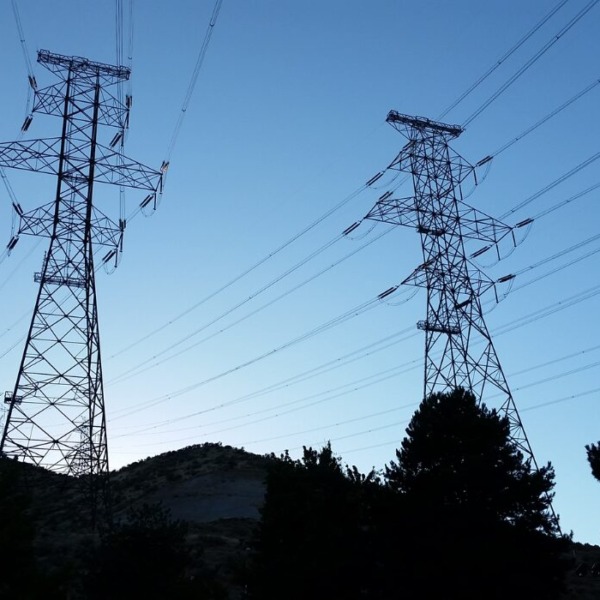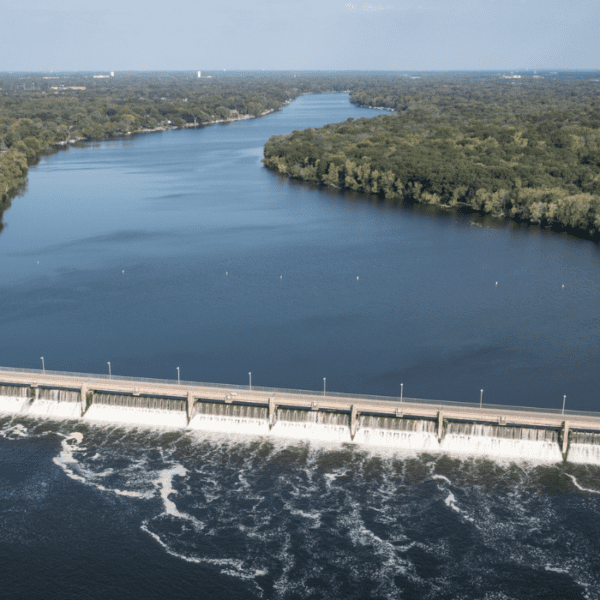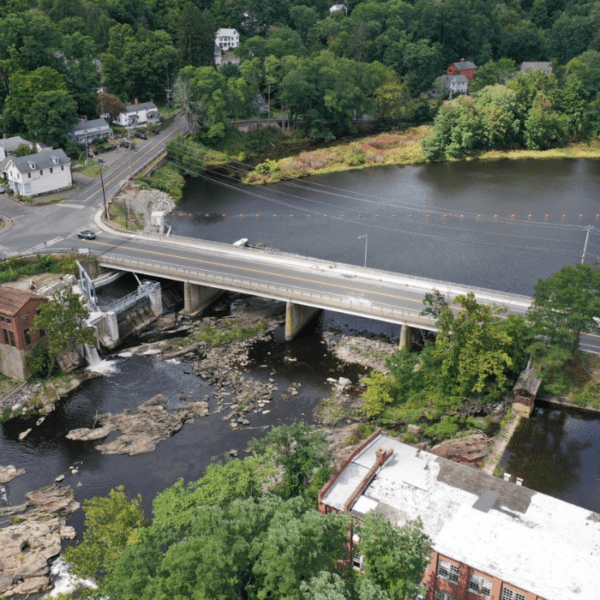As the U.S. moves closer to a decarbonized electric grid, we will need innovative ways to produce more clean electricity. One such approach is to add small hydroelectric generating units to the existing infrastructure that moves water throughout the United States.
Already, at existing water conduits throughout the U.S., there are generating units installed providing about 530 MW of clean renewable hydroelectric capacity. However, that number could increase by at least 2.5 times simply by adding more hydro at existing conduits not yet modified for power generation, according to the U.S. Department of Energy’s Oak Ridge National Laboratory.
A CLOSER LOOK AT THE OPPORTUNITY
In October 2022, the Oak Ridge National Laboratory (ORNL) released, “An Assessment of Hydropower Potential at National Conduits.” This first-of-its-kind report analyzed existing national data to estimate the potential resource capacity for developing hydropower generation within water conduits. A water conduit is defined as any tunnel, canal, pipeline, aqueduct, flume, ditch, or similar manmade water conveyance that is operated for the distribution of water for agricultural, municipal, or industrial consumption and not primarily for the generation of electricity.
The report’s findings?
The opportunity to add as much as 1,400 MW of new hydropower generation to existing conduits throughout the U.S. is an untapped available clean electricity option with high development feasibility. Yet, the development hasn’t happened as quickly as one would expect. The reasons for the lack of widespread hydropower development at existing water conduits may stem from limited knowledge about the resource potential among investors who may see hydropower development as high-risk and expensive.
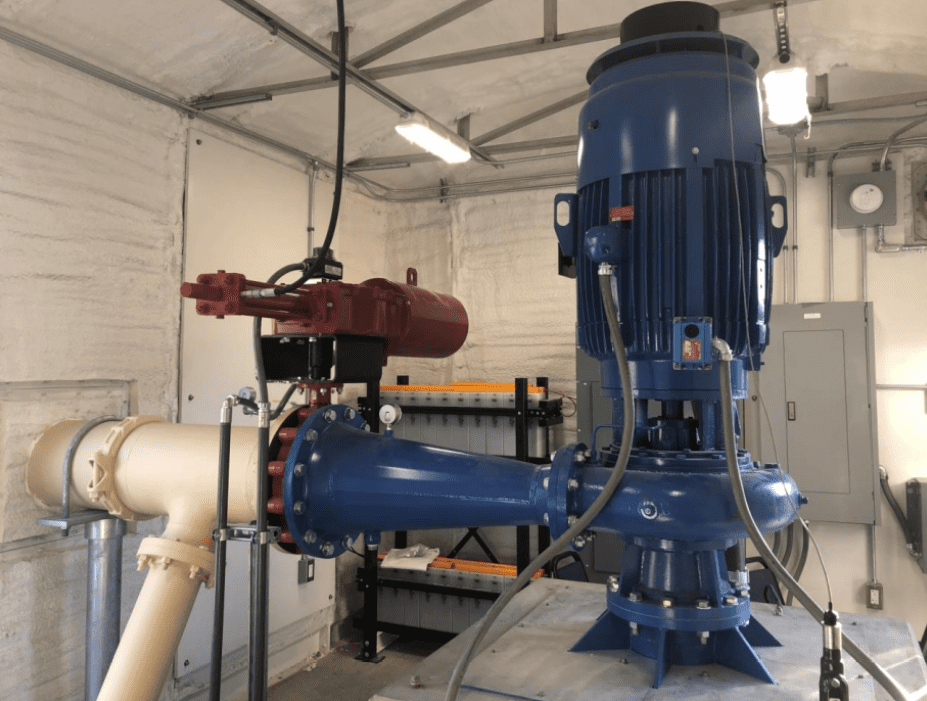
A conduit hydropower system installed at a water-treatment plant in Southern California.
WHY IT MATTERS
From the perspective of the National Hydropower Association (NHA), we see an important opportunity for industry to use the findings from the report to build market interest with water suppliers or potential water utility partners, especially those who are considering water distribution upgrades. A report that details existing data on conduits throughout the U.S. while highlighting business incentives for further resource development at both the community and state levels, should go a long way in providing investor certainty.
While a more detailed nationwide analysis and data collection may be needed to fully illustrate the specific potential for new hydropower at existing water conduits in the United States, ORNL’s report is a fantastic first step at bringing to light the significant potential for developing new clean electric resources within the U.S.’s existing water distribution infrastructure.
Hydro project developers can start conversations with water infrastructure owners with data in-hand, demonstrating the potential capacity for local, reliable conduit hydropower generation – making the case for its inclusion in water infrastructure modernization plans.

Cross-section of in-pipe conduit hydropower system.
THE DEEP DIVE: WHAT IS CONDUIT HYDROPOWER?
Conduit hydropower involves a tunnel, canal, pipeline, aqueduct, flume, ditch, or similar manmade water transportation infrastructure operated for the distribution of water. While these conveyance systems serve agricultural, municipal, or industrial purposes, they are defined as ‘conduit hydropower’ when retrofitted with hydropower generation capabilities.
Conduit hydropower projects usually qualify as small hydropower (<40 MW capacity) facilities and are capable of extracting power from water without the need of a reservoir or large dam, making them an innovative approach to hydropower generation.
Seen as having limited environmental impacts, conduit hydropower projects are built within channels that are separate from natural waterways. Additionally, this type of electric generation does not produce extra greenhouse gas emissions.
Conduit hydropower is well-suited to power rural and remote communities and microgrids. Many rural areas, especially in the western United States, have existing irrigation infrastructure to service vast agricultural fields.
Using available data, Oak Ridge researchers found a potential of adding 662 MW of new hydropower at water conduits associated with the agricultural sector, mainly in the western U.S.
Beyond this sector, Oak Ridge says water conduits associated with industrial water supply and municipal water supply are good candidates at which to add hydropower generation (about 375 MW for each sector). New hydropower capacity added at municipal water supply conduits could offset localized electric demands for water system operators in rural communities, where electricity costs are typically a substantial portion of operational expenses. The power also could be used to directly supply electricity to communities’ microgrids, allowing them to rely less on the electrical grid.
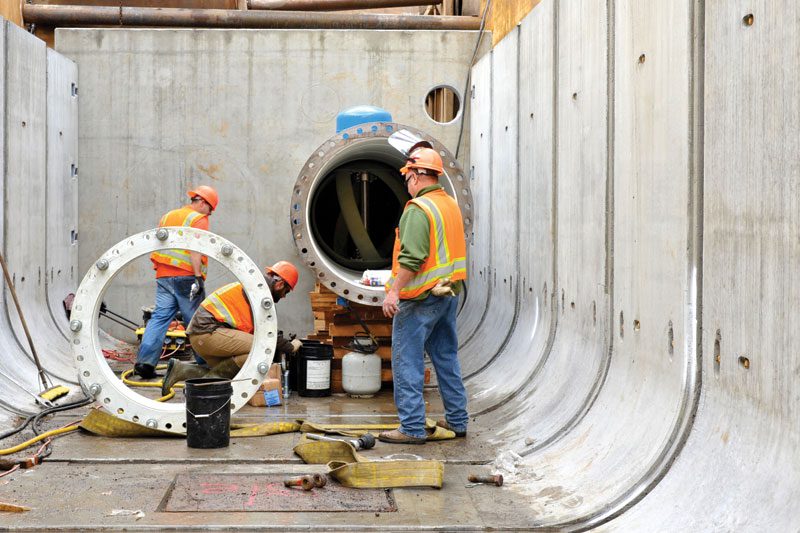
Workers in Portland, Oregon, install conduit hydropower systems in a municipal water pipeline.
ORNL’s “An Assessment of Hydropower Potential at National Conduits” lists incentives for conduit hydropower development. These incentives include the possibility for net-metering in most states, low environmental footprint, high value yield for the electricity generated, and a 45-day Federal Energy Regulatory Commission (FERC) expedited licensing process. (This process, established in the Hydropower Regulatory Efficiency Act of 2013 and amended in America’s Water Infrastructure Act of 2018, allows for “qualifying conduit” projects to use a 45-day FERC licensing process.)
To provide context on the use of the expedited licensing process, as of October 2021, 358 conduit projects have qualified for an expedited licensing process, which should provide peace of mind that using this 45-day process is a real possibility. The Bureau of Reclamation has also created a streamlined lease of power privilege (LOPP) authorization for small conduit hydropower development on Reclamation projects.
DETAILS ABOUT THE ORNL CONDUIT REPORT
ORNL’s study is one of the first national efforts toward understanding conduit hydropower’s capacity potential. Researchers working on “An Assessment of Hydropower Potential at National Conduits” approached quantifying the total hydropower potential from conduits nationwide by adopting a wide approach.
They used a reconnaissance-level assessment (i.e., an initial survey) of existing national data to reach the estimated 1.4 GW of potential new capacity through the development of conduit hydropower. To do this, the researchers analyzed data from three different conduit types – municipal, agricultural, and industrial.
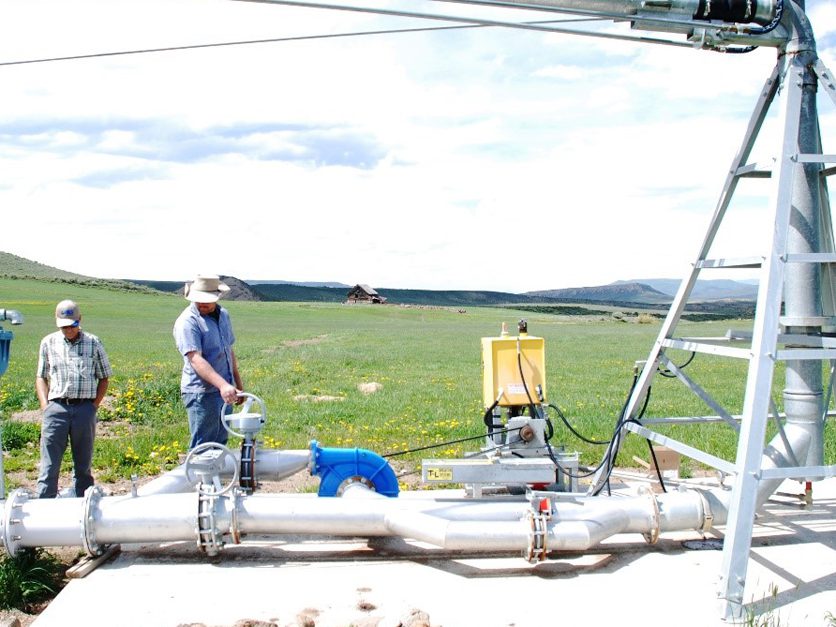
Farmers in Colorado examine a conduit hydropower prototype running through center-pivot irrigation systems.
Data was gathered from drinking water and wastewater regulatory agencies, as well as by using novel remote sensing and feature detection techniques. These data collection methods helped quantify potential conduit hydropower resources and determine estimates of future hydropower growth. The assessment used a spatially consistent approach to systematically analyze the conduit potentials across different states, allowing further inter-regional resource comparison and enabling a national assessment.
“An Assessment of Hydropower Potential at National Conduits” is the first report of its kind, and it complements the U.S. Department of Energy’s (DOE) Hydropower Vision Report, which was released in 2016, to provide a comprehensive analysis of future pathways for the sustainable development of hydropower.
While the Hydropower Vision Report takes an in-depth look at hydropower and pumped-storage generation, the report has gaps; specifically, it doesn’t cover the full spectrum of potential hydropower generation, such as an analysis of potential development at water conduits.
Initially, the intended audience for this report was the U.S. Department of Energy’s Water Power Technologies Office. Reports such as “An Assessment of Hydropower Potential at National Conduits” inform federal agencies of the potential for power generation across the whole hydropower industry. This information informs future research opportunities and investment decisions from the federal government. The assessment was not intended to be used for site-specific project development.
WHAT’S NEXT?
Historically, initial estimates of conduit hydropower’s potential capacity were relatively low, but it has been estimated that conduit hydro has a high development feasibility due to its use of existing infrastructure. As stated before, additional factors making conduit hydropower an attractive resource to develop are its relatively low environmental footprint, eligibility of net-metering in most states, and the expedited, 45-day FERC licensing process.
Despite conduit hydropower’s many positives, development has been slow. Yet, there isn’t a single factor one can point to as to why; rather, the barriers to rapid development are multi-part. For instance, there remains limited awareness regarding conduit hydropower’s resource potential among water utilities, which spans multiple sectors.
Hydropower development, particularly the regulatory process, can be considered high-risk and time-consuming, so water utilities and industrial users may not be motivated or incentivized to explore an opportunity lacking precedent.
For those interested in pursuing conduit hydropower’s potential, targeted outreach to utilities, asset owners, developers, technology providers, and community representatives are necessary.
Another barrier facing conduit hydropower is the level of difficulty in obtaining data to fully assess the renewable’s potential. Due to a lack of publicly available data, the researchers from ORNL mainly focused on the western United States, as that is where the largest repository of available information was located.
When discussing the challenges faced in developing “An Assessment of Hydropower Potential at National Conduits,” the researchers state that: “Despite the high development feasibility, the amount of total conduit hydropower resource potentials and their spatial distribution across the United States are not clearly known. This knowledge gap is mainly due to disparate data sources that do not contain common or complete information and restrictions on information owing to security concerns.”
The report is a first step, and more analysis needs to be done to capture the full scope of conduit hydropower’s potential. Ideally, the next iteration of the report would incorporate a techno-economic analysis for conduit development. As the report stands, it does not incorporate site-specific feasibility.
Those involved in the waterpower industry and interested in developing conduit hydropower would not be able to use the report as a tool for finding sites to develop new projects, but the report can be used to show the feasibility and widespread potential for conduit hydropower development.









